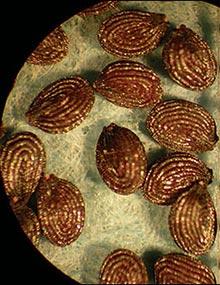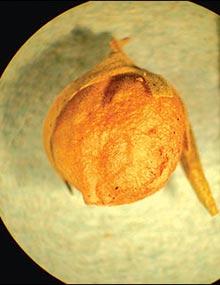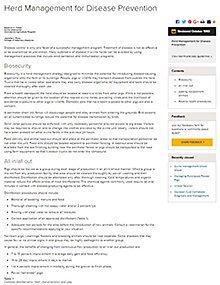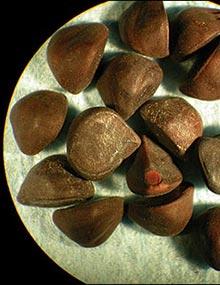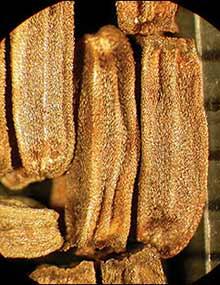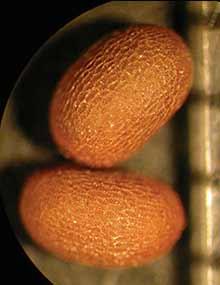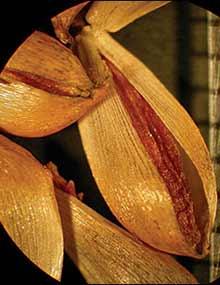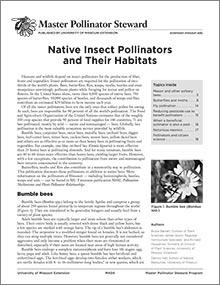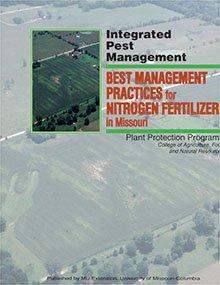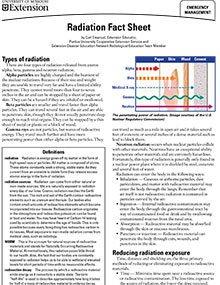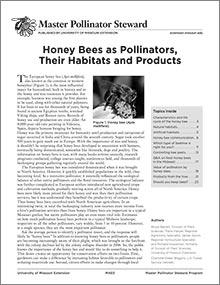Missouri Weed Seeds, Page 13
Reviewed
Brassicaceae (Mustard family) is one of the larger groups of plants in the state. Several plants within this family, such as yellow rocket and wild mustard, are common throughout Missouri.
Missouri Weed Seeds, Page 48
Reviewed
Several species of Vitaceae (Grape family) are commercially valuable to the state’s economy. Virginia creeper is one of the most common vining weeds encountered in undisturbed habitats.
Funding Incentives for Agroforestry in Missouri
Reviewed
Find government and private funding programs to finance practices such as alley cropping, windbreaks, riparian buffers, silvopasture and forest farming.
Missouri Weed Seeds, Page 16
Reviewed
Caprifoliaceae (Honeysuckle family) includes several species of honeysuckle, viburnum and elderberry.
Missouri Weed Seeds, Page 19
Reviewed
Most of the members of Convolvulaceae (Morningglory family) are vining plants, including several common species of morningglories, bindweeds and the parasitic group of plants, dodders.
Optimizing Fertilizer Value of Manure from Slurry Hog Finishing Operations
Reviewed
See recommendations for applying manure on corn, soybeans or fescue. Learn how to maximize slurry manure’s value and assess its storage and application costs.
Missouri Weed Seeds, Page 22
Reviewed
The only two members of Dipsacaceae (Teasel family) that are known to occur in Missouri are cutleaf and common teasel.
Missouri Weed Seeds, Page 25
Reviewed
The majority of Geraniaceae (Geranium family) plants present in Missouri are geraniums. There are at least five species known to occur in the state.
Weed Identification and Herbicide Injury Guide for Corn and Soybean
Reviewed $37
Weeds can significantly reduce corn and soybean yields. View photos of 141 weed species at different stages of development and learn to identify them in this publication. Also see photos and descriptions of symptoms for herbicide-injured plants.
Missouri Weed Seeds, Page 28
Reviewed
Besides being considered weedy plants, several members of Liliaceae (Lily family) are commonly cultivated. Such members include asparagus, yucca and many cultivars of daylilies.
Best Management Practices for Nitrogen Fertilizer in Missouri
Reviewed
Successful nitrogen management delivers enough nitrogen to crops to optimize yield and profitability while minimizing losses to water and air. Learn the best management practices from sound economic, production and environmental viewpoints in this guide.
Radiation Fact Sheet
Reviewed
Editor’s note
On 1/22/15, a web address was updated on this page and in the PDF.
Coping With Summer Heat
Reviewed
The heat of a Missouri summer not only can make for high utility bills, but also can be deadly. Here are some tips to help keep you comfortable, healthy and penny-wise.
Honey Bees as Pollinators, Their Habitats and Products
New
Learn about the honey bee, from its life cycle, to its various races, to its pest problems, the benefits it provides, and how we can aid its success in this University of Missouri Extension guide. Become a Master Pollinator Steward!
Squeezed by Rising Food Prices?
Reviewed
Small changes in your shopping habits can mean saving money at the grocery store. Check for tips on this page that can work for you and your family.
Conserving Missouri's Wild and Managed Pollinators
New
Pollinators are critically important for natural ecosystems and crop production. Learn why pollinators are crucial, the major threats confronting them, conservation steps being taken, and how you can help in this University of Missouri Extension guide.
Challenges and Choices: Fit for Life
Reviewed
Editor's note
This webpage contains updated contact information at the end of the So get moving section that is outdated in the PDF version.
Collective Bargaining 2: Behavioral Factors Influencing Union Bargaining Power - Page 3
New
Organizational behavior Organizational behavior
When individuals are brought together in any social setting, they may collectively evolve into one of several forms of social organization.
Collective Bargaining 2: Behavioral Factors Influencing Union Bargaining Power - Page 6
New
Building an effective bargaining committee Building an effective bargaining committee
The primary factors for the determination of who will serve on the bargaining committee are the constitution and by-laws of the orga
Collective Bargaining 2: Behavioral Factors Influencing Union Bargaining Power
New
Introduction Revised by Douglas Swanson, June 2022
